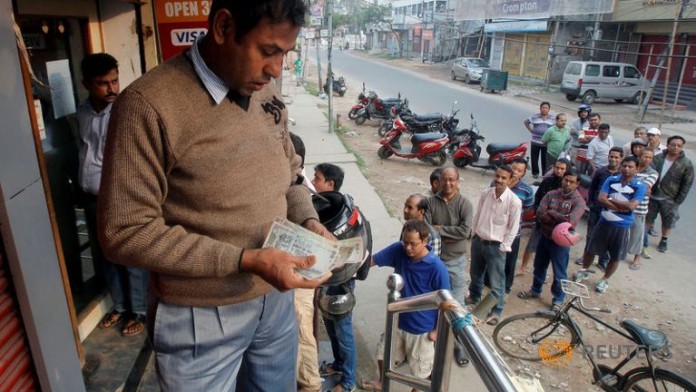In some relief for the citizens of India, bank account holders can now withdraw Rs. 10,000 per day from an ATM. A weekly limit of Rs. 24,000 per bank account remains unchanged. The daily limit of withdrawing money from the ATM has been increased from Rs. 4,500. For current account holders the amount which can be collected every week has been doubled to Rs. 1 Lakh.
Prime Minister Narendra Modi had announced the ban on the notes with the denominations of Rs. 500 and Rs. 1,000. Mr. Modi assured that the demonetization would have a check on corruption, tax evasion and counterfeiting. The demonetization resulted in a major cash crunch among the common people and also resulted in long lines at the bank. The PM in an emotional speech had asked for 50 days till December 30, 2016 to resolve the problems.
However, after the New Year, the problem in terms of scarcity of notes has reduced. On the other hand the opposition has alleged that the cash restrictions still remain and according to most of the estimates, all the banned notes have been deposited in the bank and that the black money has not been destroyed or forced out. Since the announcement of demonetization, Finance Minister Arun Jaitley has pointed out towards improved tax and has dismissed the reports of economic disruption.
The Governor of Reserve Bank of India, Urjit Patel was summoned by the parliamentary committee. Patel was summoned to explain how the demonetization decision was taken and was also asked to outline its impact. The central bank in a written answer stated that it was the government that advised that Rs. 500 and Rs. 1,000 notes must be removed from circulation. The PM announced the demonetization just 24 hours later. The RBI has also been criticized after the government’s lead taken on the landmark decision on currency.
Photo Credits: desispy







